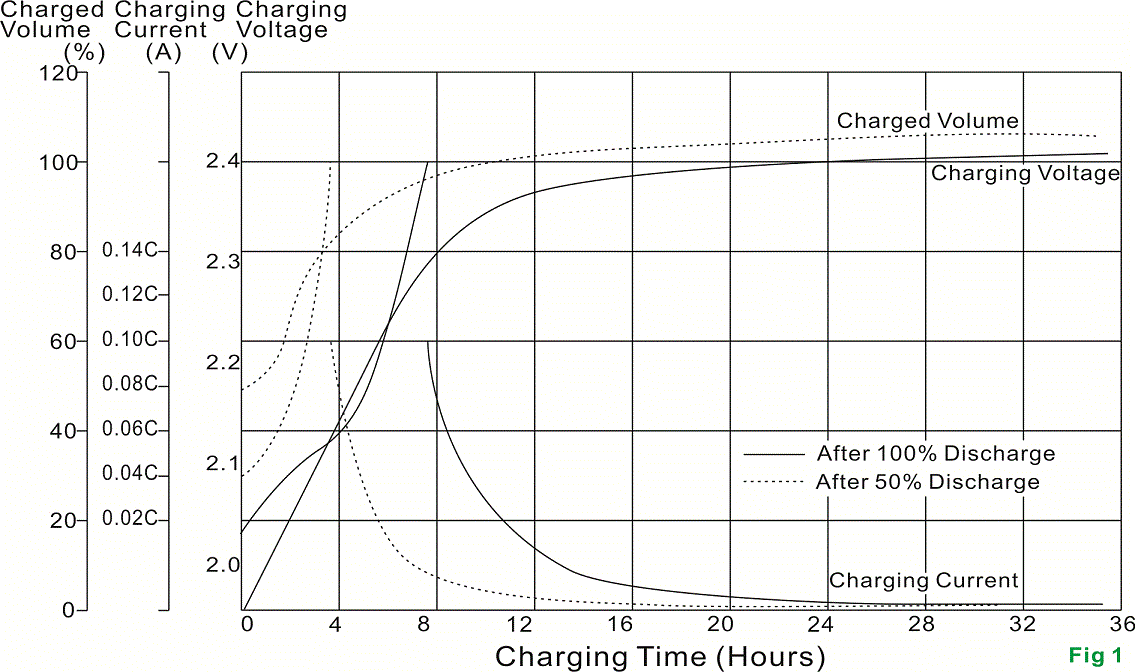Charging
1. Two Stage charging: (Constant current to constant voltage).
This is recommended method of charging VRLA battery ,it is necessary to strictly control the actual charging voltage to ensure it is within the limited figure.
Fig.1 shows the charge characteristics at a constant current (0.1C(A)) and a constant voltage 2.4V/cell after discharing of 50% and 100% of the 20hr rated capacity.
This time required to complete the charging varies by the amount of the previous discharge,initial charge current and temperature.
As shown in Fig 1 charging a fully discharged battery by constant current and constant voltage 0f 0.1C(A) and 2.4V/cell respectively at 25℃ (77°F) will put back more than 100% of the previous discharge in 24 hours.
Since the battery does not restrict the initial charge current,making it shorten the time for a charge of more than 100%.
2. Floating charging.
Floating charge voltage must be kept at a value high enough to compensate the battery self-discharge so the battery can be in a fully charged condition at all times.
The optimum charge voltge for Maxton battery is 2.25V/cell under normal temperature condition (25℃ / 77°F).
3. Supplementary charging.
Part of the battery capacity will have been lost due to self-discharge during transportation or storage.Give supplementary charging before putting into service.
The supplementary charging should be given by every six months,the charging condition in Table 1.
Table 1:Condition of supplementary charging
4. The relation of charging voltage and ambient temperature.
The charging voltage shall be 2.4V/cell at 25℃ (77°F).
However,as the average ambient temperature rises ,charging voltage should be reduced to prevent overcharge,otherwise the average ambient temperature reduce,charging voltage should be raised to prevent under-charge accordingly,the recommended compensation factor is -3mV/cell at 25℃(77°F) of standard point.
 Chinese
Chinese


